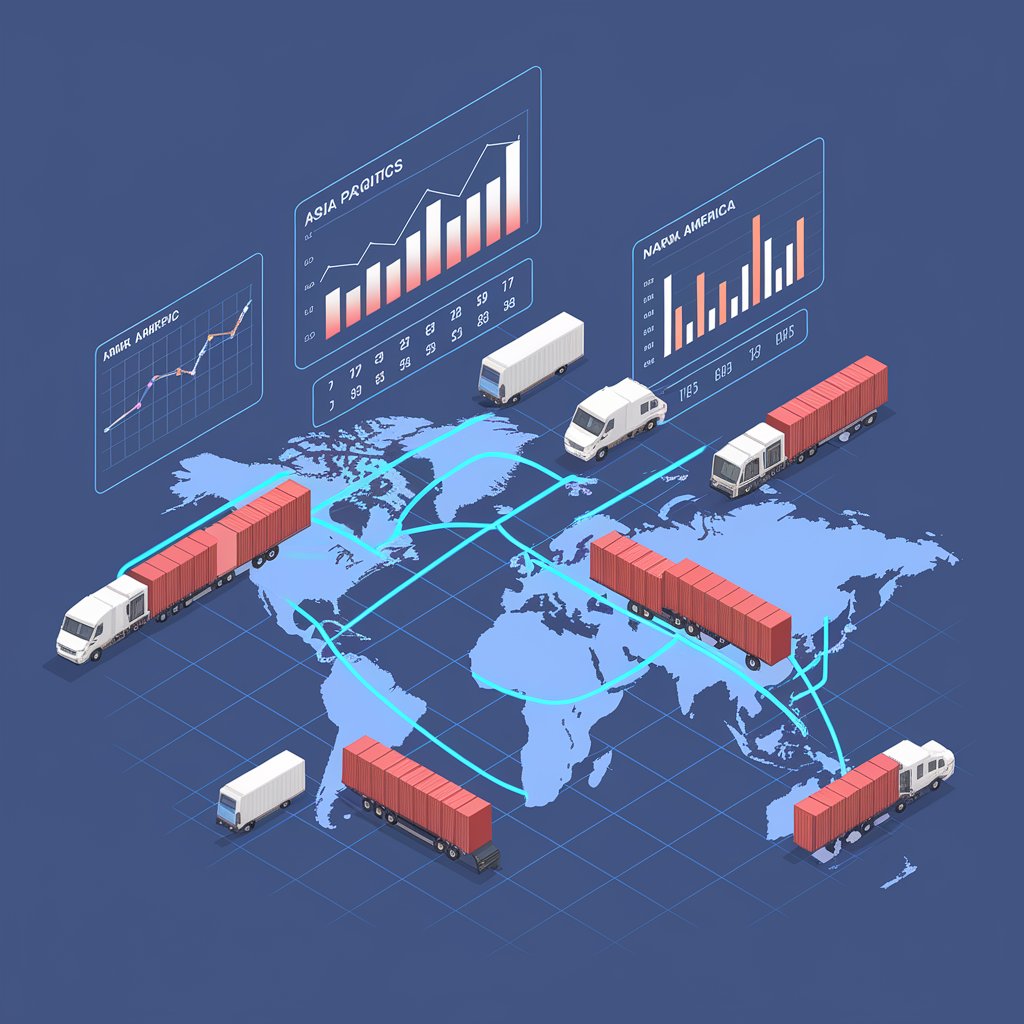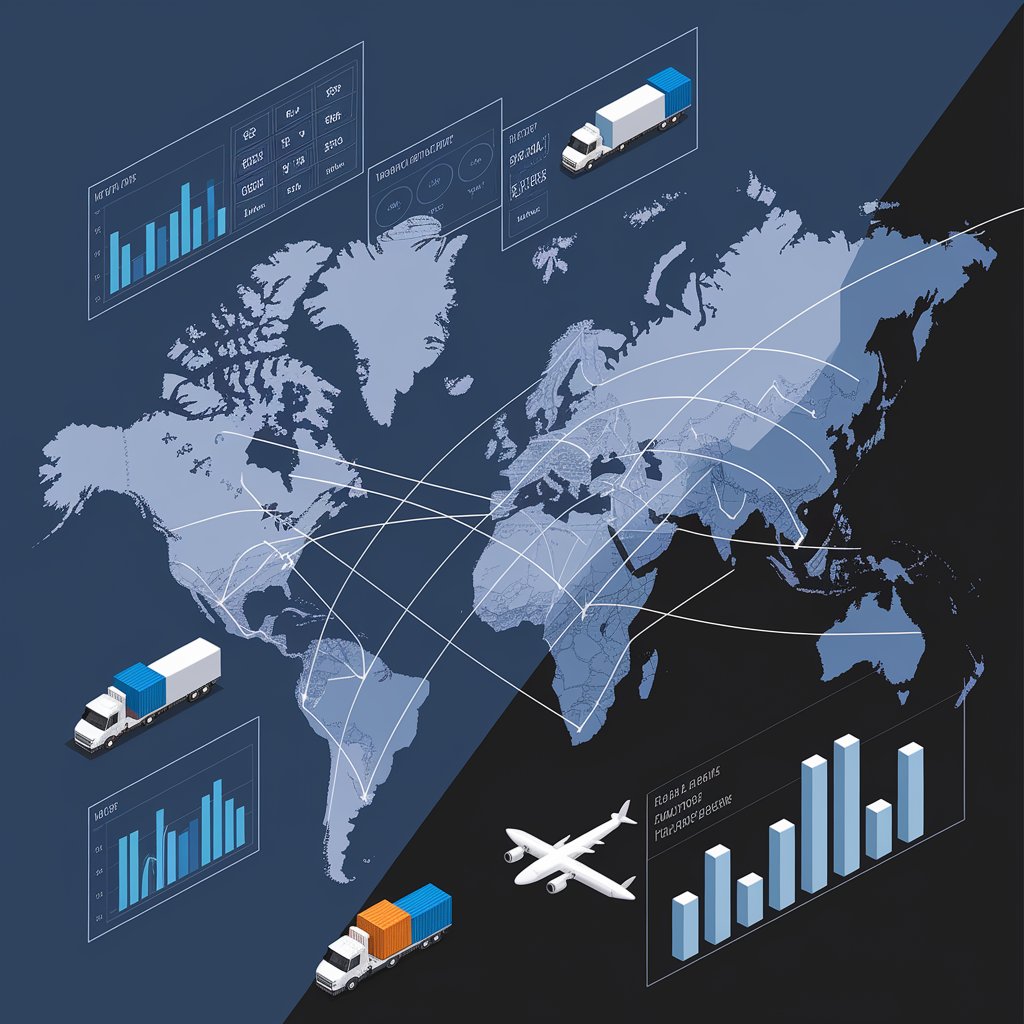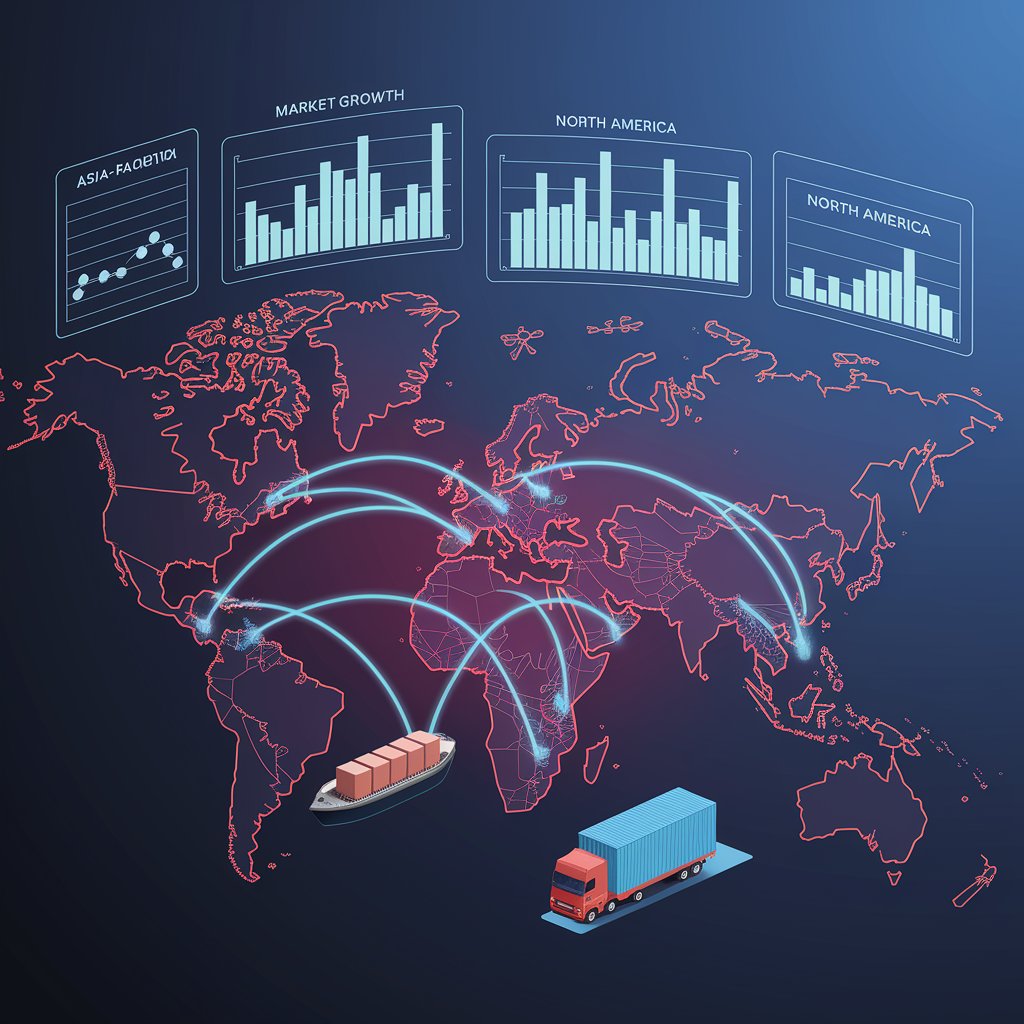Freight Forwarding Market: Trends, Challenges, and Growth Opportunities 📈🌍
In this article, we’ll explore the structure of the market, current trends, key players, and the future outlook of freight forwarding worldwide.

🌐 What Is the Freight Forwarding Market?
The freight forwarding market refers to the global ecosystem of companies and services involved in coordinating and managing the shipment of goods from origin to destination, across borders and transport modes.
It includes:
- 🌊 Ocean Freight
- ✈️ Air Freight
- 🚛 Inland Transportation (Trucking/Rail)
- 🧾 Customs Brokerage
- 🏢 Warehousing & Fulfillment Services
- 📲 Digital Freight Platforms & Software
Freight forwarders act as intermediaries, organizing transportation, negotiating rates, handling compliance, and ensuring smooth delivery across the supply chain.
📊 Market Size and Growth
The global freight forwarding market is valued at over $200 billion, with projections expecting a CAGR of ~4–6% through 2030, depending on region and sector.
Regional Breakdown:
- 🇨🇳 Asia-Pacific: Fastest-growing market, led by China, Japan, and India
- 🇺🇸 North America: High adoption of digital freight tools and 3PL partnerships
- 🇪🇺 Europe: Strong intermodal infrastructure and sustainability investments
- 🌍 Emerging Markets: Africa, South America expanding due to trade corridors
🔍 eCommerce, nearshoring, and just-in-time models are key growth drivers.

🏢 Key Players in the Freight Forwarding Industry
The market includes a mix of multinational giants and niche, tech-enabled players:
Company | Services | Highlights |
DHL Global Forwarding | Air, ocean, customs | Global presence, sustainability leader |
Kuehne + Nagel | All modes + contract logistics | Strong digital capabilities |
DB Schenker | Europe-heavy with integrated supply chain | Warehousing + freight |
DSV | Freight + logistics + last-mile | Aggressive M&A growth |
Expeditors | Non-asset-based model | Highly profitable, U.S. strength |
Linbis | Digital freight platform | Cloud-based tools for small & mid-sized forwarders |
🧠 Many players are adopting AI, IoT, and platformization to stay competitive.
🔄 Current Trends Shaping the Market
- Digitalization – API integrations, online quoting, and real-time tracking
- Sustainability – Green freight corridors, CO₂ tracking, modal shifts
- eCommerce Logistics – B2B + B2C fulfillment, fast cross-border shipping
- Resilience Planning – Diversification after COVID-19 and geopolitical disruptions
- Platform Models – Marketplace-style platforms connecting shippers and carriers
💡 Freight is no longer just about transportation—it’s about data, speed, and intelligence.

⚠️ Market Challenges
Despite the growth, freight forwarders face real obstacles:
- 🔺 Capacity constraints and rate volatility
- 🌐 Compliance with evolving trade regulations
- 🧱 Infrastructure bottlenecks at ports and borders
- 💻 Cybersecurity risks in digital systems
- 🤝 Talent gaps in logistics and tech integration
These challenges drive demand for automated systems and smarter, agile supply chain partners.
🚀 Opportunities Ahead
To stay ahead, freight forwarders should focus on:
- 📲 Tech investment: AI-driven route planning, CRM, and TMS solutions
- 🌱 Sustainable solutions: Green partners, modal alternatives
- 🧩 Integrated services: Customs, warehousing, and distribution in one
- 🤝 SMB onboarding: Offering tools and visibility to smaller shippers
- 🔍 Data transparency: Real-time metrics and performance analytics
✨ Forwarders that combine global reach + local insight + digital agility will dominate the decade.

🏁 Final Thoughts
The freight forwarding market is undergoing massive transformation—from manual coordination to platform-powered intelligence. As trade volumes rebound and expectations rise, freight forwarders will be expected to deliver speed, visibility, and flexibility like never before.
📦 Whether you’re a shipper, carrier, or 3PL, understanding the dynamics of this market is key to staying competitive in the new global logistics economy.
